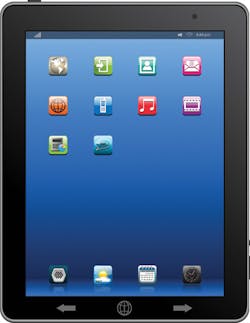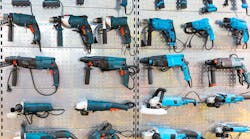We all know what BYOB stands for, but what about BYOD? If you’re one of those people who stay abreast of the latest technological terms, then you may know BYOD is an acronym for “bring your own device” — as in mobile device. Whether tablet, notebook, laptop, or smartphone, it doesn’t matter as long as you own one and know how to operate it. Today, these mobile devices are being used not only to enhance your personal life, but to help you streamline and successfully perform your job as well.
According to David Willis, vice president and analyst at Gartner, Inc., an information technology research and advisory company headquartered in Stamford, Conn., "BYOD strategies are the most radical change to the economics and the culture of client computing in business in decades. The benefits of BYOD include creating new mobile workforce opportunities, increasing employee satisfaction, and reducing or avoiding costs."
By the numbers: |
|
|
|
|
So how exactly can BYOD help bring about these benefits? Time savings is one obvious way. In the April 2015 Electric Line magazine article, “Commercial Off-the-Shelf Mobile Devices for Industrial Automation,” author Jean Femia of Opto 22 gives the following scenario:
“At a stone quarry, two powerful 6-inch (15 cm) pumps remove millions of gallons of water that builds up from rainfall and runoff each year. An electrician standing at the quarry’s edge pulls out his iPhone, opens a web browser, and types in his URL and password. On his screen he sees data for each pump — status and current draw — plus flow rate and the water level in the quarry. No problems, so no need to go down into the quarry. He moves on to his next task.”
To further confirm the growing use of mobile device technology in the field to help electrical professionals work smarter and more efficiently, EC&M conducted a non-scientific online poll a few months ago whereby 68 of 126 respondents — roughly 54% — indicated that they use mobile device apps daily or weekly to complete electrical tasks more efficiently.
According to the January 2015 EC&M article, “Mobile Apps for Electrical Professionals” by freelance writer Tom Zind:
“Electrical service providers to residential and commercial markets are sending more workers into the field and arming more project designers with mobile devices that amount to another tool in the toolbox. While the degree of reliance on apps that perform calculations and facilitate communications varies, more electricians and contractors are at least assessing apps and mobile device functions that in the right hands can produce more efficiencies.”
Although mobile apps will never be a substitute for education and real-world work experience, EC&M magazine’s Editor in Chief Mike Eby recently compiled a list of electrical apps that he believes will help electrical designers and installers complete their projects more efficiently. The apps include:
- NEC 2014 Edition
- Sun Seeker: 3D Augmented Reality Viewer
- iBend Pipe
- Electrical Formulator
- Voltage Drop Calculator
- Electrical Calc USA
- Electrical Wiring Lite
- Electrical Motor Helper
|
For more electrical apps picked by Mike Eby, visit : |
If you work in a plant/facility and aren’t convinced that a smart device full of electrical apps and various other technologies is soon to become a staple in your work arsenal, Fermia’s article points out:
“A raft of terms — the Fourth Industrial Revolution, M2M, the Internet of Things, Industrial Internet, Industry 4.0 — all point to the growing interconnectedness of sensors, actuators, machines, and processes with each other and with the humans who work with them.”
The chance that mobile device technology will eliminate your job is quite slim at this point in time. However, if you’ve delayed or refused to keep up with the growing trend of BYOD, you may just make yourself obsolete.




